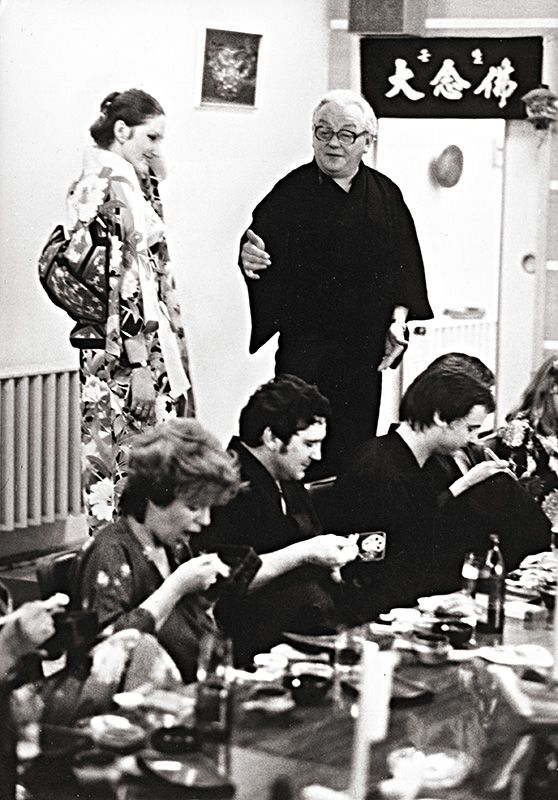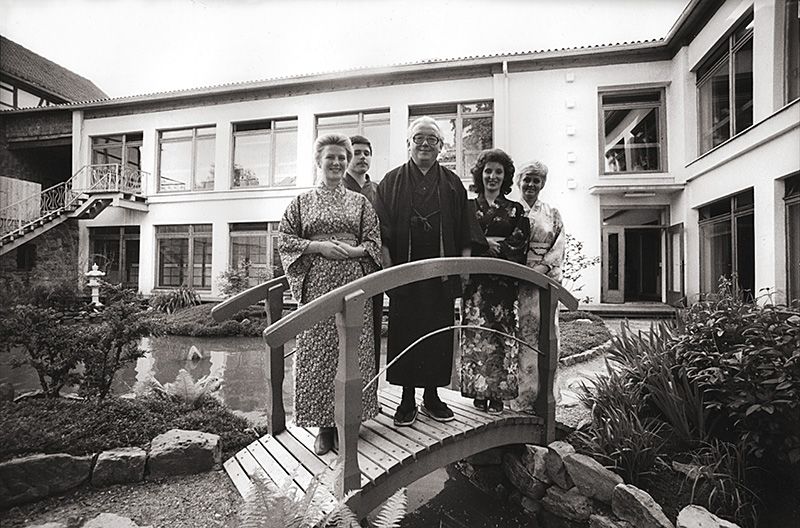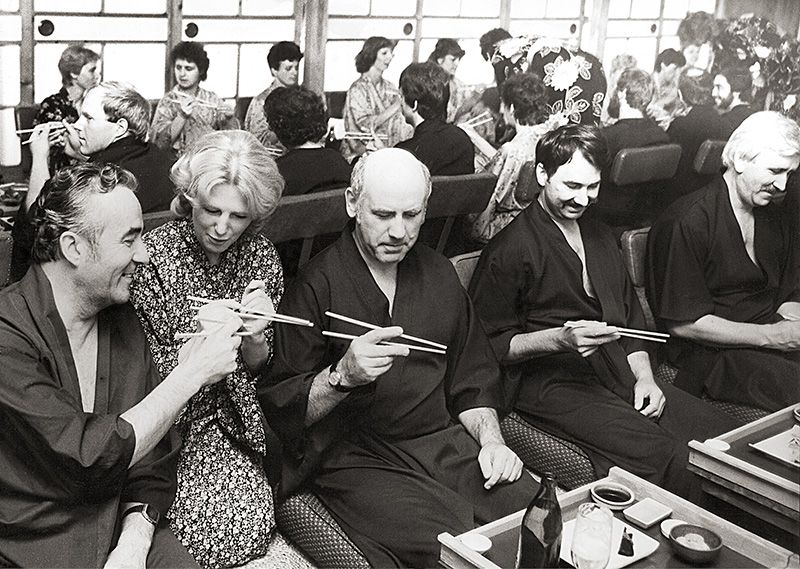
Japanese Cuisine Behind the Iron Curtain
Society Culture- English
- 日本語
- 简体字
- 繁體字
- Français
- Español
- العربية
- Русский
A Taste of Japan in Former East Germany
 Rolf Anschütz in his restaurant. (Photo courtesy Gabi Roeszler)
Rolf Anschütz in his restaurant. (Photo courtesy Gabi Roeszler)
Imagine a small town in a mountainous region of central Europe containing roughly 30,000 inhabitants, located more than 300 kilometers from the capital, and isolated from the general flow of information, travel, and international goods exchange due to being located in the German Democratic Republic—the former East Germany. To open a Japanese restaurant in such a place under such economic conditions, with scarce resources and all kinds of restrictions and controls, seems fairly absurd. And yet, what looks like a miracle actually happened in 1970 thanks to the relentless energy and enormous inventive talent of the dedicated cook and gastronome Rolf Anschütz.
Anschütz came from a family with a long tradition of gastronomy and managed a restaurant in the little town of Suhl, presently in the German Free State of Thuringia. He realized his dream by transforming his eatery into a replica of the traditional ryokan-style Japanese restaurant. His establishment was East Germany’s only Japanese restaurant until 1981. This story was made into a film released in October 2012, which triggered all kinds of reactions from viewers. The first thing it did, however, was to make this success story known to the general public.
An Enthusiastic and Improvised Japanese Experience
The film, titled Sushi in Suhl, tells the story of Anschütz, who—residing within the communist sphere—had naturally never travelled to Japan and had not even been to a Japanese restaurant. What he lacked in experience he made up for with a burning enthusiasm, and he read all the information he could get hold of on the country and its food. To offer Japanese cuisine in a place with such scarce resources and a centrally planned economy must have been a huge challenge, but Anschütz managed to find all kinds of ersatz ingredients. Instead of shōyu (soy sauce), he used Worcester sauce, and lacking nori (dried seaweed paper), he used spinach leaves to roll maki-zushi. Later, when his restaurant had established itself—and after the authorities realized that it was an important attraction for foreign visitors, including the Japanese—he was able to import more authentic Japanese ingredients from Düsseldorf in West Germany, which in those days was the thriving capital of the Japanese economy in Europe, with a population of more than 10,000 Japanese expats.
 Rolf Anschütz and staff in front of his restaurant. (Photo courtesy Harry Krieg)
Rolf Anschütz and staff in front of his restaurant. (Photo courtesy Harry Krieg)
Anschütz constantly strove to refine his cuisine, often with the help and advice of curious Japanese visitors. But in order for his restaurant and its improvised techniques to succeed, it was essential that he provided a holistic Japanese experience for his guests. He trained local girls and women to serve in self-fabricated kimono—at one time making use of costumes used at a recent opera performance of Madame Butterfly—and did his best to present them as Japanese waitresses and entertainers, prompting people to speak of them as “part-time geisha.” He even had a large Japanese bath built on the premises, which all the guests enjoyed, cocktails in hand, before being clad in yukata and seated at the dining table, where the host explained to them the use of chopsticks and introduced them to the basics of Japanese etiquette. This style of hospitality, mimicking the traditional Japanese ryokan inns, was a thrill to the citizens of East Germany, who were, of course, eager to experience such exoticism as they could never hope to travel to Japan to try the real thing. The popularity was so strong that the restaurant was fully booked for up to two years in advance. Furthermore, the high cost of 100 (East) deutschmarks, more than a month’s rent, did not deter prospective customers, who would later cherish their memories of four or five hours’ immersion in the Thuringian version of Japanese hospitality. Once a year the Japanese ambassador would pay a visit, which was reason enough for the authorities to tolerate this individualistic venture. However, in the late 1980s, independent-minded Anschütz came under increasing pressure that finally resulted in his giving up the management of his establishment.
Cinematic Engagement with the Communist Past
 Guests being taught how to use chopsticks by local “part-time geisha.” (Photo courtesy Christel Anschuetz)
Guests being taught how to use chopsticks by local “part-time geisha.” (Photo courtesy Christel Anschuetz)
Sushi in Suhl, a dramatized version of Anschütz’s perfectionist endeavor, was welcomed by many as an entertaining chronicle that was sometimes absurd and often funny, but always understandable and realistically depicted. The film painted a vivid picture of the toils of a man with a vision in a state-directed economy. Other viewers criticized nostalgic influences in the depiction of interactions with the repressive system, such as when officers, who in reality would often act in a severe fashion, are shown as droll and comical adventurers in Japanese cuisine. Depending on one’s origin in former East or West Germany and one’s personal experiences, the discussion about films dealing with life under the communist regime is, naturally enough, controversial. How truthful can such a filmic engagement with the past be? Is it a mere rag, or does it seriously inform its audience about how it felt to live and work in those days? Whichever conclusion one arrives at, Sushi in Suhl is an entertaining piece of cinema, just as the story itself tells of a rather unusual and moving fate.
The restaurant was closed after the German unification. Anschütz, who later became president of the German-Japanese society of Thuringia, was decorated by the Japanese government and died in 2008.
A trailer for Sushi in Suhl can be viewed here: http://www.sushi-in-suhl.de/
(Originally written in English on December 25, 2012.)